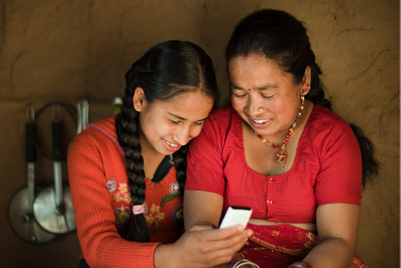
Photo courtesy of Angad Basnet Chettri

Photo courtesy of Angad Basnet Chettri

Photo courtesy of Angad Basnet Chettri

Photo courtesy of Kanishka Dasgupta, COO, Creo Communications

Photo courtesy of Kanishka Dasgupta, COO, Creo Communications

Photo courtesy of Kanishka Dasgupta, COO, Creo Communications

Photo courtesy of Kanishka Dasgupta, COO, Creo Communications

Photo courtesy of Kanishka Dasgupta, COO, Creo Communications

Photo courtesy of Kanishka Dasgupta, COO, Creo Communications

Photo courtesy of Kanishka Dasgupta, COO, Creo Communications

Photo courtesy of Kanishka Dasgupta, COO, Creo Communications
Kathmandu Valley was a city of temples. Now it is a city of tents. This is a very unfortunate time for all Nepalese across the world. Since 25 April at 11:56 NST, things have drastically changed for all of us.
As you know from following the news, the death toll from the devastating earthquake of 7.8 magnitude that struck us about a week back is already above 7,000. I would like to appeal to the international community to come forward and help Nepal in every possible way during this tragic time. There are many villages where almost all of the houses have been destroyed. We all face renewed fear during the many aftershocks, which have by now become a part of our daily life.
The Advertising Association of Nepal (AAN) is coordinating with the Nepal Government to accumulate an Earthquake Relief Fund. All the member agencies of our association are already contributing. If anyone wants to help, please reach out to me or the AAN and we will guide you in the process.
Along with the terrible loss of life, the country has also suffered severe damage to three Durbar Squares: UNESCO World Heritage Sites in three cities within the Kathmandu Valley. These public square areas, preserved almost intact for centuries, now lie in ruins.
Boasting what UNESCO has cited as among "the most highly developed craftsmanship of brick, stone, timber and bronze in the world”, these locations also have religious, cultural, historical, social and economic value interconnected with them. They are the urban focal points of Nepal’s capital and serve as the skeleton of the Kathmandu Valley: If you take them away, the city collapses—losing its core meaning beyond being the political and business capital of the country. Kathmandu's temples and monuments are central to our community life. Many of us played on them as youngsters, and we have often met our friends there as we came together to celebrate our regular festivals.
Almost 10 per cent of Nepal’s economy depends on tourism. So many investments and infrastructure projects have been built around Kathmandu Valley and even closer to these areas. Foreign visitors come to these areas and indulge themselves with local culture, feeling Nepali history through the temples, shrines and palaces built around these areas. Many gift shops and restaurants run in these areas on the sole basis of providing visitors with the look and feel of these heritage sites. In fact, the backdrop of these areas is the primary brand proposition of these businesses' offering to their customers. Through the artifacts, wooden cravings and statuettes available here, visitors gain an appreciation for Nepalese handicrafts.
In short, Kathmandu Valley offers a historic crossroads of religion and culture, which also excites many foreigners to spend time in Nepal beyond the adventure tourism of high-altitude mountain treks. Monuments like these, which are internationally recognized as a unique mixing of Tibetan and Indian styles as well as Buddhist and Hindu iconography, are the core brand proposition of Kathmandu Valley to attract more foreign visitors. The ambiance, in turn, is central to the offerings of many travel agencies that are selling sight-seeing packages around the world.
We know rebuilding these structures will be a huge task given the technical and monetary challenges. And of course, it might also take a long time. But both Nepalese and the world have an obligation to restore these Durbar Square areas to their former glory, because it is simply impossible to imagine Kathmandu Valley without these restored Durbar Square sites. Moreover, without them Kathmandu Valley as a tourism product would lose its charm to ignite the excitement of foreigners, which would negatively impact the tourism income that the country needs—now more than ever.
Obviously there will also be a huge emotional, cultural, historical, religious and social loss for Nepalese all across the world if we are unable to restore these sites to their old glory, and many of us will have tears in our eyes when we happen to visit these sites.
 The author is the founder and managing director of Outreach Nepal. Currently he is also the vice-president of the Advertising Association of Nepal (AAN). You can tweet him your comments at @shakyau or reach him at shakyau@gmail.com
The author is the founder and managing director of Outreach Nepal. Currently he is also the vice-president of the Advertising Association of Nepal (AAN). You can tweet him your comments at @shakyau or reach him at shakyau@gmail.com













.jpg&h=334&w=500&q=100&v=20250320&c=1)


.png&h=334&w=500&q=100&v=20250320&c=1)




.png&h=334&w=500&q=100&v=20250320&c=1)





.png&h=268&w=401&q=100&v=20250320&c=1)


